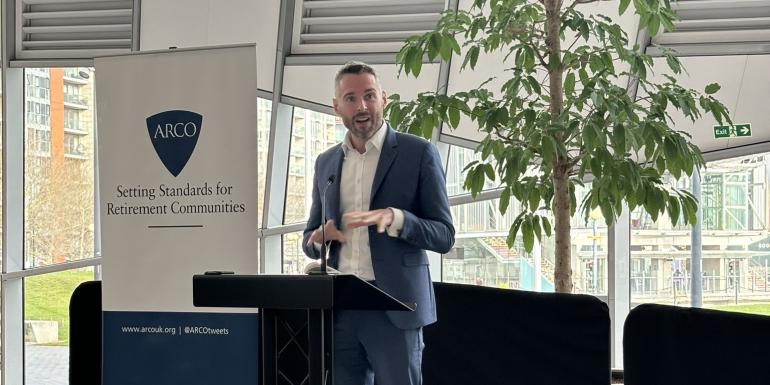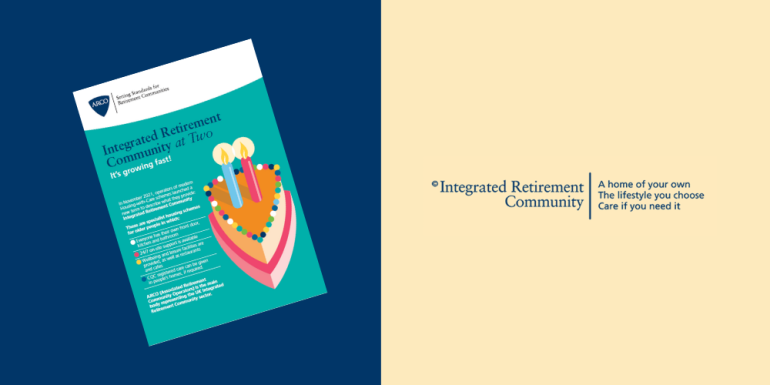2021 London Plan introduced a specific policy on Specialist Older Persons Housing (H13) which was a watershed moment for the senior living sector.
However, three years on from the adoption of the London Plan, we have not seen many examples of policy H13 in practice. Of course, there are reasons outside of planning that explain why integrated retirement communities (IRCs) have not come forwards in volume in London, but are planners doing enough to provide fertile ground for the sector?
There is strong political support for IRCs at City Hall, however only a handful of London boroughs have adopted policies actively supporting IRCs. And herein lies a key planning challenge: if policy is not being derived locally, the benefits of IRCs are less likely to be fully understood and appreciated.
This is our practical experience in London boroughs, many of whom have no familiarity with IRCs, with some even viewing the tenure cynically as a ploy to avoid providing affordable housing. Clearly, this ignorance puts IRCs immediately on the back foot when trying to establish themselves in London. This, coupled with the widely accepted viability challenges faced by IRCs – such as high CIL rates, high build costs and low internal efficiency – creates headwinds for the sector.
If the headwinds can be overcome, the wider planning benefits of IRCs include a markedly reduced burden on health services, the creation of jobs, and the release of much needed and under-occupied family housing.
One area of challenge we have experienced for IRCs in the capital is their ability to deliver on-site affordable housing, particularly social rented tenure which is a political priority across all London boroughs. Of course, IRCs should play their part in helping to deliver affordable housing. However, unless the site is large enough to accommodate separate buildings, there are serious practical constraints to delivering mixed tenure buildings given the extensive communal facilities, care requirements and community-led design that are inherent features of an IRC.
Whilst the London Plan allows for off-site delivery or cash in lieu contributions towards affordable housing, it does so only in exceptional circumstances, and no additional leniency is provided for IRCs. The exceptional circumstances case is a high bar to meet, and policy makers could certainly do more to recognise the constraints of IRCs.
In assessing affordable housing, the “Fast Track Route” extends to Specialist Older Persons Housing, allowing IRCs to progress through planning more quickly when delivering the minimum affordable housing thresholds (35% or 50% on public or industrial land as well as meeting locally defined tenure mix). Fast Track schemes are not required to submit viability information at the application stage and are subject only to an “Early-Stage” viability review, triggered only if an agreed level of progress on site is not made within a specified time.
All schemes that fail to satisfy the minimum thresholds must instead follow the “Viability Tested Route”. They must submit viability information at the application stage and will be subject to both Early- and Late-Stage viability reviews, the latter being automatically triggered, usually on 75% disposals.
Viability reviews capture any improvement in scheme viability over the life of the project. Any surplus profit identified at the review requires the delivery of additional affordable homes and/or a financial contribution.
The Mayor’s Affordable Housing and Viability Supplementary Planning Guidance (SPG) from 2017 provides a helpful framework for viability testing and includes standardised formulae for viability reviews. The SPG acknowledges the “distinct economics” of the Build to Rent (BTR) sector and provides BTR-specific guidance and review formulae. However, there is no mention of Older Persons’s Housing in the SPG, and only one fleeting reference to it is made in the 2023 consultation draft for the revised London Plan Development Viability Guidance (which is yet to be adopted).
Recognition in GLA Guidance that IRCs come with their own suite of constraints and opportunities, as per the BTR sector, would be welcome. For example, the triggers for review mechanisms could be varied based on the delivery structure, and it could be made clear that any surplus identified at a review would be provided as a financial contribution, as opposed to on-site affordable housing.
Additionally, when pursuing the Viability Tested Route, it is important that IRCs specifically designed to be operated on a rented basis are not treated in the same vein as other more familiar rental products (such as BTR and student housing). There are many distinctions between these models – notably operating costs - and therefore the viability of IRC schemes should be assessed on their own merits.
There is still much work to be done to provide a planning environment fit for IRCs to flourish in London. This involves boroughs building upon the London Plan and establishing their own local policies that fully embrace IRCs as a housing tenure and a better understanding of their wider societal benefits. With a rapidly ageing population, the demographics are clear and IRCs must be planned for.
Article authored by:
Sam Stackhouse, Partner (Planning team), Will Seamer, Partner (Viability team), and Sarah Gibbs, Associate (Viability team) at Montagu Evans





